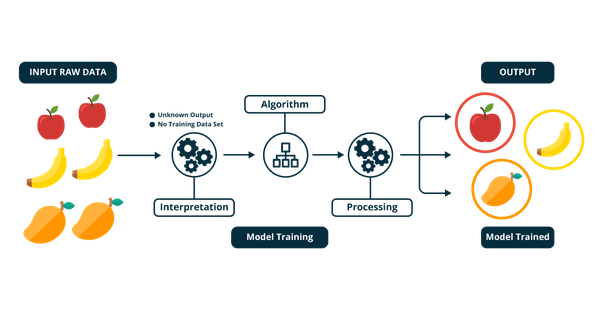
In the previous post we discussed supervised learning where the correct answers are available, and the task of the machine learning algorithm is to find a model that predicts them based on the input data.
In unsupervised learning, the correct answers are not provided. This makes the situation quite different since we can't build the model by making it fit the correct answers on training data. It also makes the evaluation of performance more complicated since we can't check whether the learned model is doing well or not.
Typical unsupervised learning methods attempt to learn some kind of “structure” underlying the data. This can mean, for example, visualization where similar items are placed near each other and dissimilar items further away from each other. It can also mean clustering where we use the data to identify groups or “clusters” of items that are similar to each other but dissimilar from data in other clusters.
Example
As a concrete example, grocery store chains collect data about their customers' shopping behavior (that's why you have all those loyalty cards). To better understand their customers, the store can either visualize the data using a graph where each customer is represented by a dot and customers who tend to buy the same products are placed nearer each other than customers who buy different products. Or, the store could apply clustering to obtain a set of customer groups such as ‘low-budget health food enthusiasts’, ‘high-end fish lovers’, ‘soda and pizza 6 days a week’, and so on. Note that the machine learning method would only group the customers into clusters, but it wouldn't automatically generate the cluster labels (‘fish lovers’ and so on). This task would be left for the user.
Yet another example of unsupervised learning can be termed generative modeling. This has become a prominent approach since the last few years as a deep learning technique called generative adversarial networks (GANs) has lead to great advances. Given some data, for example, photographs of people's faces, a generative model can generate more of the same: more real-looking but artificial images of people's faces.
0 comments:
Post a Comment